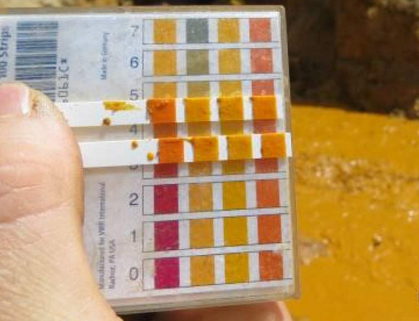Bacteria From Mining To Treat Wastewater
Published on by Water Network Research, Official research team of The Water Network in Academic
An international research team hopes to help the mining industry harness the power of bacteria to treat wastewater, but the project’s implications go far beyond cutting-edge science.

Project leader Dr Lesley Warren explains why.
A world-first project will apply genomics technologies to mining operations with the goal of developing biological tools that can monitor, manage and even harness the power of the bacteria present in wastewaters, which today are causing significant environmental damage. Not only important from a science perspective, the project has attracted the industry’s attention because of its focus on how this research can be integrated into operational and corporate decision-making.
Sulphur is a common constituent of mining waste and scientists have known for many years that bacteria capable of using these sulphur compounds as energy for metabolism are involved in their alteration, a process that can lead to environmental issues such as acid rock drainage (ARD).
What we have not yet managed to find out is how they’re doing it, a question that an international, multi-disciplinary research project, funded by Genome Canada and led by Dr Lesley Warren of the University of Toronto, has taken on the challenging of answering over the next four years.
“Until very recently – the last 20 years – we have lacked the tools to actually investigate what these bacteria are doing so bacterial processes in mining wastes have largely remained a black box,” Warren says. “With new genomics technologies, we can now investigate the DNA of these bacteria and identify their metabolic capabilities, which give us insights into how they are cycling sulphur.”
Biological tools: critical to the viability of 21stcentury mining
The goal of the project is to identify biologically informed indicators to understand exactly what these bacteria are doing that impacts wastewater quality. These indicators would then provide proactive levers that mines could use to manage their water more effectively. On top of this – and most excitingly for Warren – the team also hopes to develop biological treatment strategies based on the new understanding of which bugs are present and their capabilities.
“We could essentially use the bacteria to treat wastewaters themselves, getting companies away from having to reactively respond to issues by using chemicals,” she explains.
“Smarter management and treatment strategies will decrease the risk of environmental impacts and thus financial liabilities, improve operational efficiencies, decrease chemical and energy costs associated with current more traditional chemical treatment approaches and provide more robust strategies for closure planning.
“These tools will enable more sustainable environmental management for the sector as a whole. Given that the costs of environmental management are becoming a bigger and bigger business driver, these kinds of tools are critical to the viability of mining in the 21st century.”
Read more: Mining Technology
Media
Taxonomy
- Bacteria
- Treatment
- Filtration
- Wastewater Treatment
- Filtration
- Mine Water Management
- Mine Drainage
- water treatment